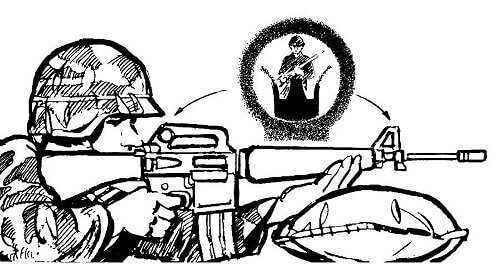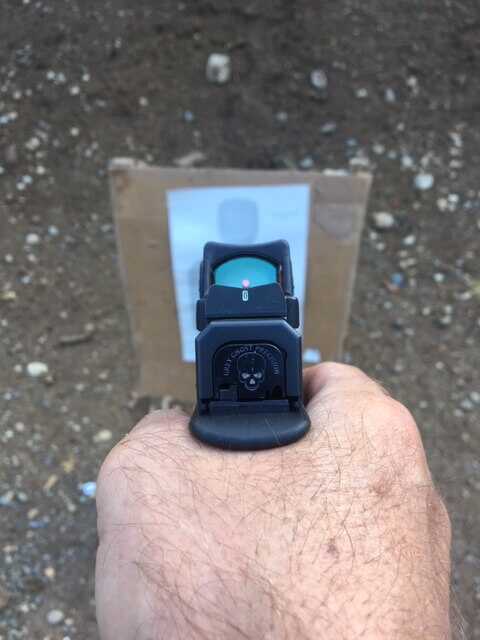You don’t have to look for trouble to find it. In times of instability, it is prudent to consider where trouble may come from and come up with a tentative plan to address it. If you think you may get into a fight, make some friends and study fighting. Fighting involves all the components of marksmanship and overlays tactics.
Marksmanship is wonderful, but excessive marksmanship can get you killed in a fight. Not taking a quick effective shot while working on a precision shot may leave you trying to break a shot while bleeding if the other guy is a little faster. The secret is applying just enough marksmanship to make the hit that you need to win the fight. First hits often win.
Situational Awareness Trumps All Skills and Tactics
Be aware. See first. Think fast and then act without hesitation. This is the basis for any dangerous situation. If is tough to win a fight if you don’r yet realize you are in one. If you see bad things coming, you can shape fight in your favor or avoid it all together.
Four Marksmanship Fundamentals
The mighty United States Army teaches four fundamentals of marksmanship. You need to know these to make it through Basic Training:
1. Steady position focuses on grip, elbow placement, rifle butt position, stock weld, bone support, muscle relaxation, and natural point of aim.
2. Aiming focuses on sight alignment, eye-focus, and consistent sight picture.
3. Breath control teaches the soldier to hold his breath when firing. Breathing while firing can cause the bullet to move upward or downward of the target.
4. Trigger squeeze focuses on squeezing the trigger rather than pulling it. Pulling the trigger too hard can cause the bullet to move to the left or right of the target.
Most shooters get some version of these fundamentals in their training. They are nice, but it is really more for target shooting than fighting. That said, you have to start with fundamentals and one must know the rules before breaking them. The Army also teaches that the enemy gets a vote on every plan. He may move. He may (gasp) shoot back…..at you.
Essential Tasks
There are only two essential things you must do to hit a target.
1. You must align the barrel with the target.
2. You must press the trigger without disturbing that alignment.
All else – stance, grip, sight picture, and all the fundamentals – are helpful, but not essential.
The amount of time and effort you must put into barrel alignment and trigger pull depends on the distance to and size of the target. Speed is achieved by spending only the time necessary to make the hit and no more.
Inside ten yards, you can shoot both eyes open and be very sloppy with the trigger because the target subtends so much angle. At contact distances, you don’t need to use sights at all.
Beyond 10 yards, sight alignment and smooth trigger pull become more important. Past 50 yards, you can still hit, but your sight alignment and the trigger must be very clean.

How do you see in a fight?
Can you think of any sport where the players close one eye? You need binocular vision for depth perception and peripheral vision. We use binocular vision to move and estimate range.
It can help precision shooting to close one eye and it may even be essential to hit a particular target. Don’t spend any more time than is necessary closing one eye or looking at the sights. See what you need to see. Search for it and focus on it.
Your eyes can only focus on a single distance at any given time. For full situational awareness, you should be constantly transitioning near and far. When you need a precise shot, you must focus on the sights, but in follow-through, you must fight to shift to a more distant point. You must scan not only right and left but near and far.

When not shooting, keep your gun down so it doesn’t block your field of view nor cover anything you are not willing to destroy.
See what you need to see. Get the sight picture you must-have for the accuracy that the situation requires.
Follow Through
Provide the trigger pull needed to attain the required accuracy. Follow through, assess the target, repeat as necessary.
Follow the target to the ground.
Check your self, check your buddy, check your gun, reload, stage your magazines. There may be more fight left. Look for the next threat.
These ideas are simple, but shooting is not instinctive and it is not easy.
Tactics
If you are in a covered and concealed position, far away, shooting a stationary, marksmanship is necessary and useful. The more of these fundamentals you have, the better your shot. This is why snipers must be superb marksmen. Their superior tactics should keep them out of anything remotely resembling a fair fight.
As you progress in shooting and learning and fighting, you will require a deeper understanding. You may not get to plan your shot.
The problem with unnecessary precision is that the guy who gets a peripheral hit faster by cheating the fundamentals has a very real advantage over future superior marksmanship from a now wounded guy who didn’t make the first hit.
Again, here are the two non-negotiable things you have to do. They are simple but not easy:
1. Align the barrel with the target
2. Press the trigger without disturbing the barrel.
Everything else is helpful but non-essential. You can have a terrible unstable position and still get a shot off. Up close, you can get a hit without using the sights at all. You can breathe and shoot.
If you are moving it is hard to do anything else. Trigger squeeze can be fast and hard as long as it doesn’t move the barrel too much. Compromise on the fundamentals can buy you that most precious of all commodities in a fight, TIME.
I am not suggesting that the fundamentals are not valid. Just remember, they are “Marksmanship Fundamentals”. In shooting competitions, there are rules. In a fight, there are no laws but physics and gravity.
Here are a couple of fighting fundamentals (this is not a complete list):
If you ain’t cheating, you ain’t trying.
See first shoot first.
The first hit may be the last hit. Be the guy who makes it.
Move.
Use cover.
Be lucky (this can actually replace all of the fundamentals, but it is difficult to train).
“If you don’t like something change it; if you can’t change it, change the way you think about it.” ~Mary Engelbreit
Remember this, depending on your range and your weapon, varying degrees of marksmanship are necessary. Know what you need to get a hit and make it now. How do you know what it takes to get the hit? Realistic training. The bad guys get it on the street every time they get in a fight and don’t die.


Here’s what all new shooters need to do.
Go and participate in an Appleseed. You will get 2 days of instruction for $75.
https://appleseedinfo.org/
There you will learn to put the fundamentals to practice and begin to make them instinctive.
Sight alighment, Sight picture , trigger press, NPOA etc.
They are called the fundamentals not the basics because you never outgrow practicing these things.
I’m a big fan of dry firing at a white wall. Then you can concentrate on trigger press and slight alignment.
Do that for 10 minutes then focus on a point on the wall, which brings in sight picture and NPOA.
THIS is the way ALL articles for the web ‘consumption’ should be written, concise and to the point…covering many aspects. Comes with KNOWING the subject matter. Bravo…
Quite good; thanks!
Good read- train hard and develop the warrior mindset.
Great stuff here. Some things I would add in re of home intruder.
If you hear a noise at night (usually when it happens) while in bed and you think it’s a break in, notifiy your partner (if you have one) as quitely as possible to be ready to dial 911
USMC 60s RVN Well said, de Opresso Libre.
Decent article.